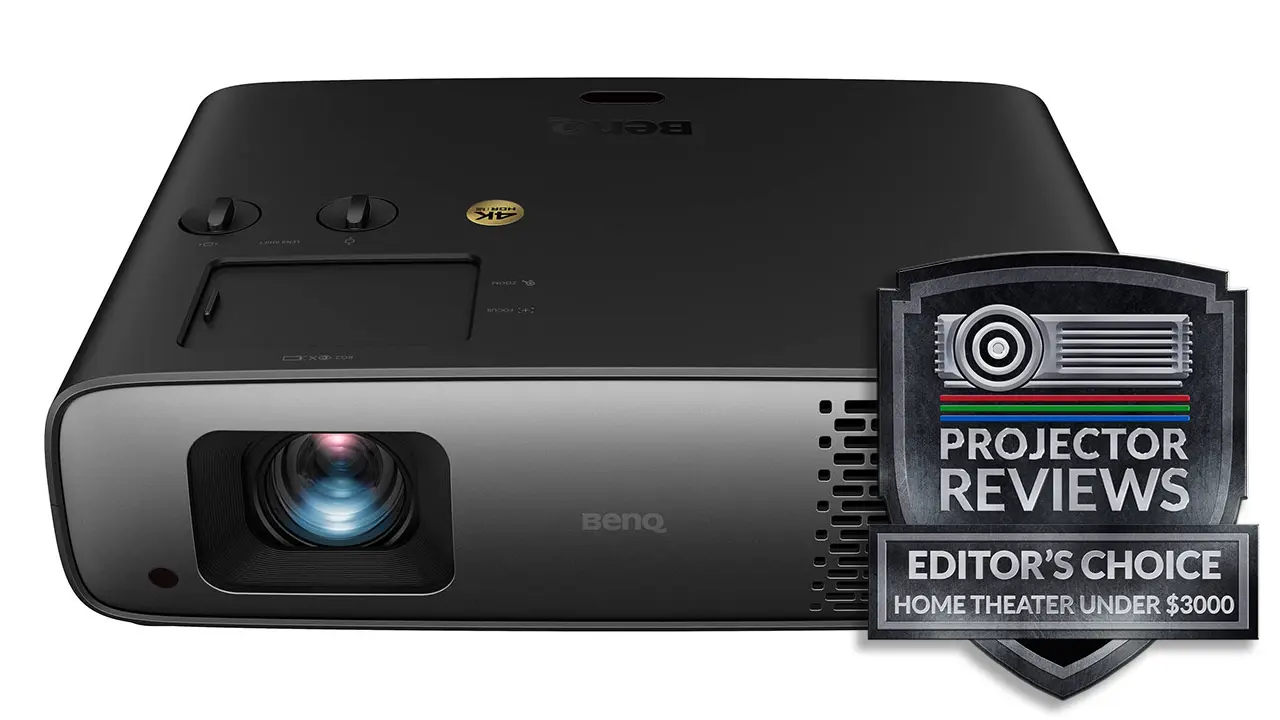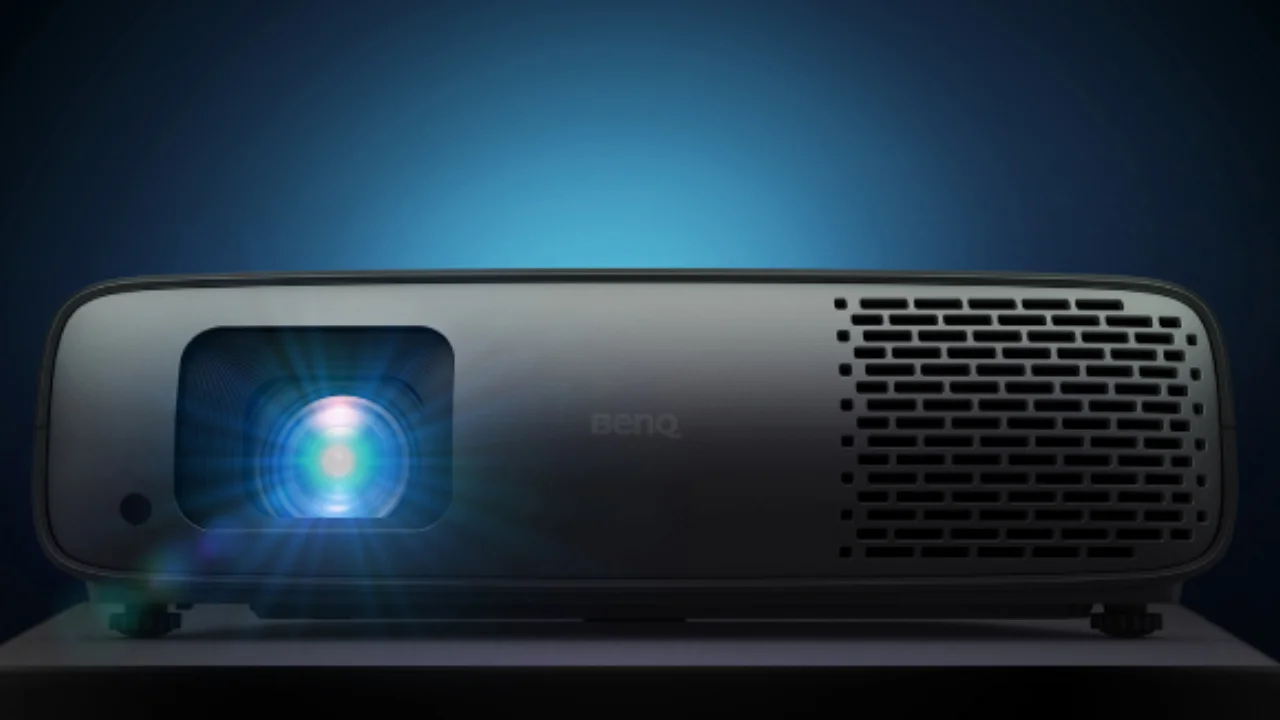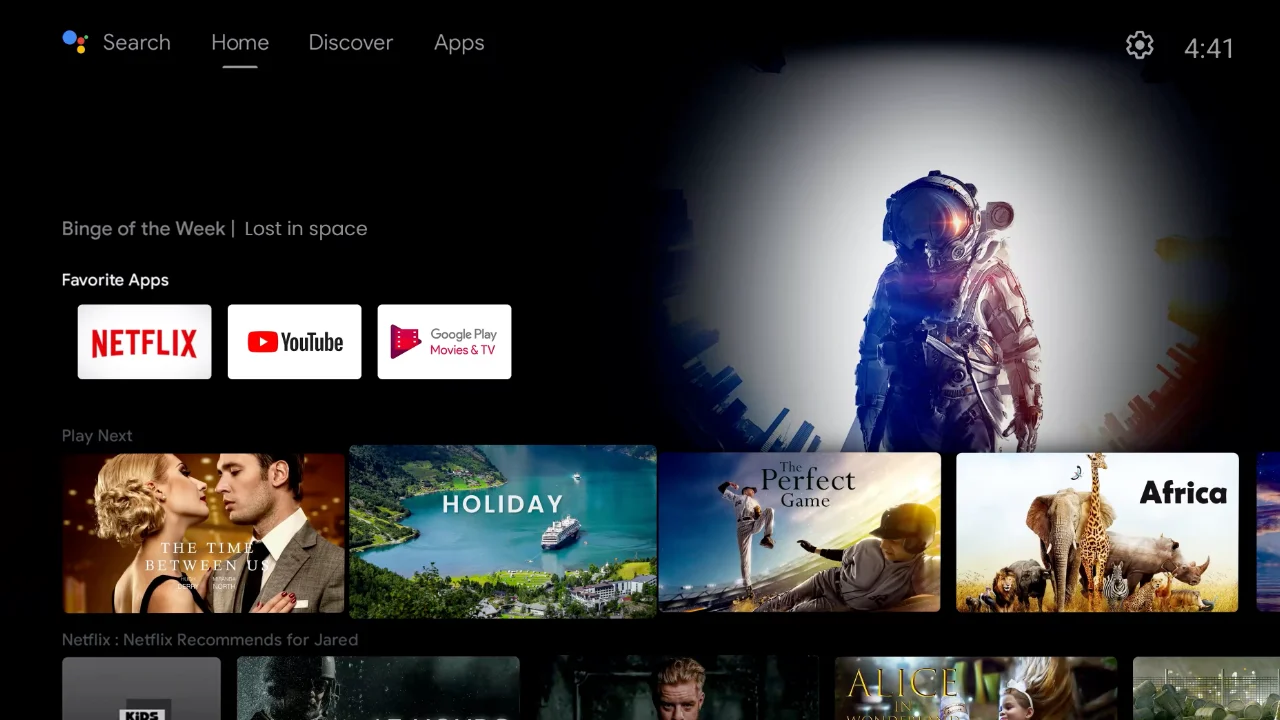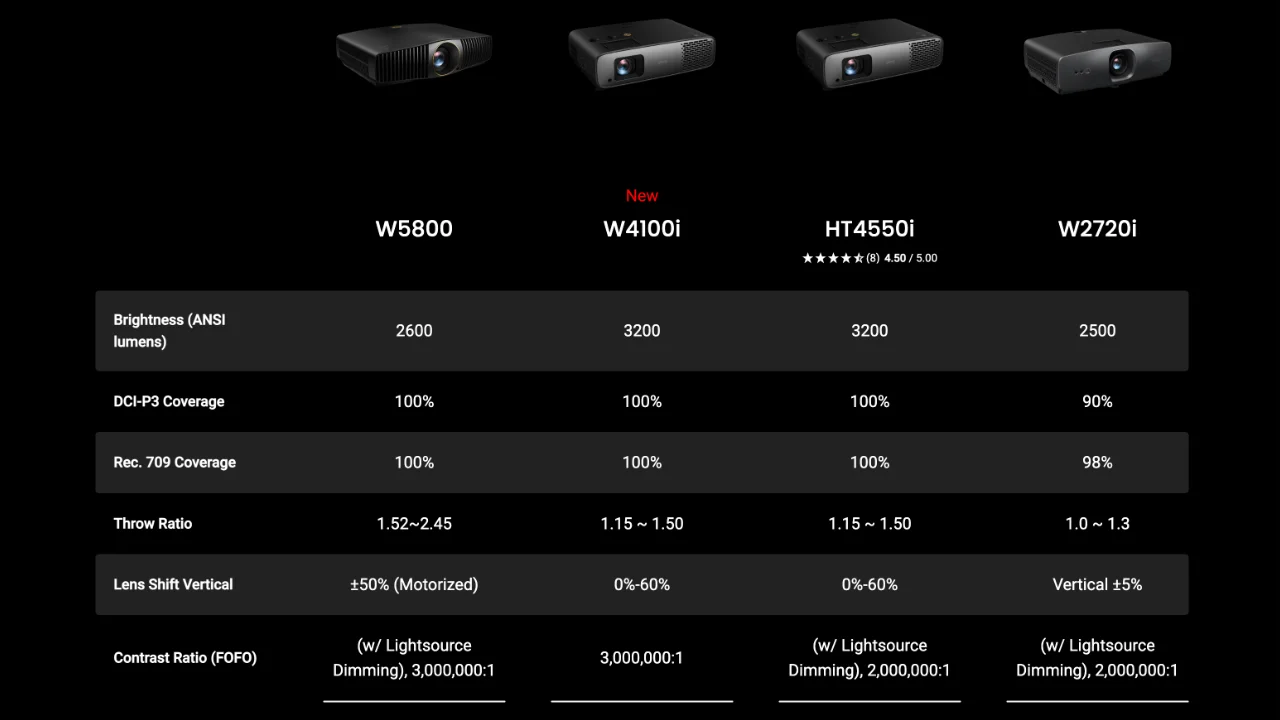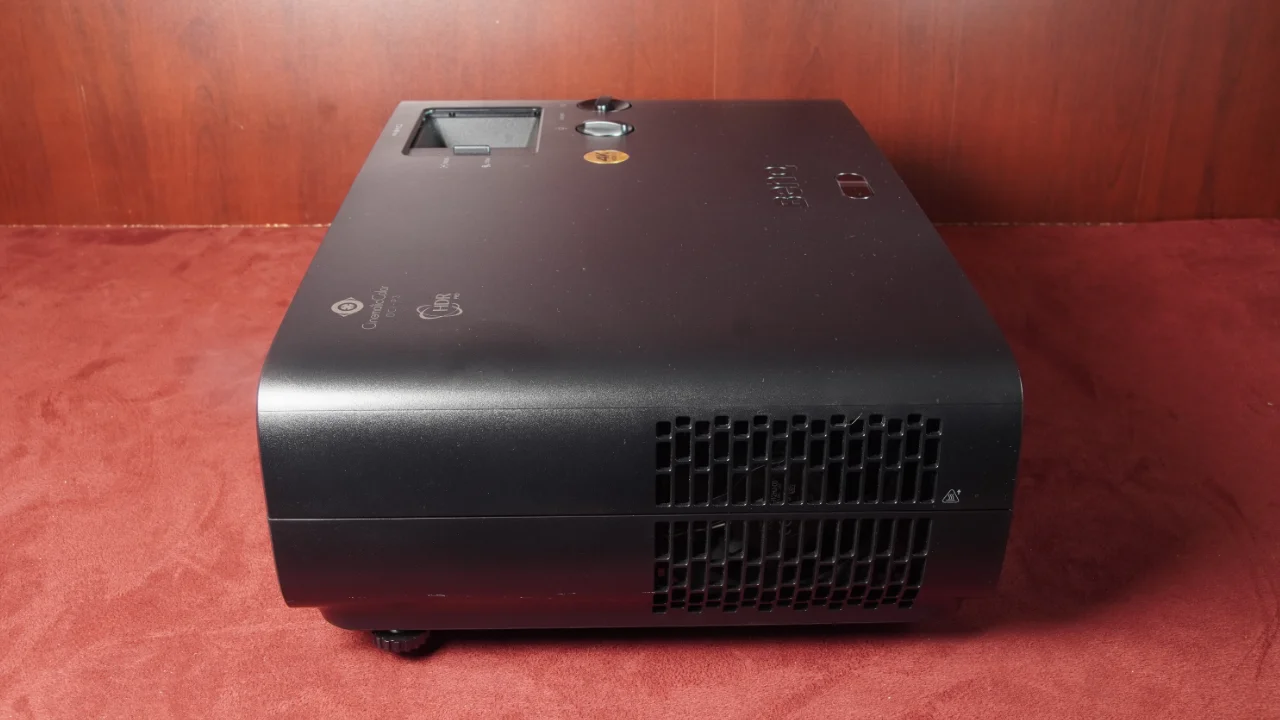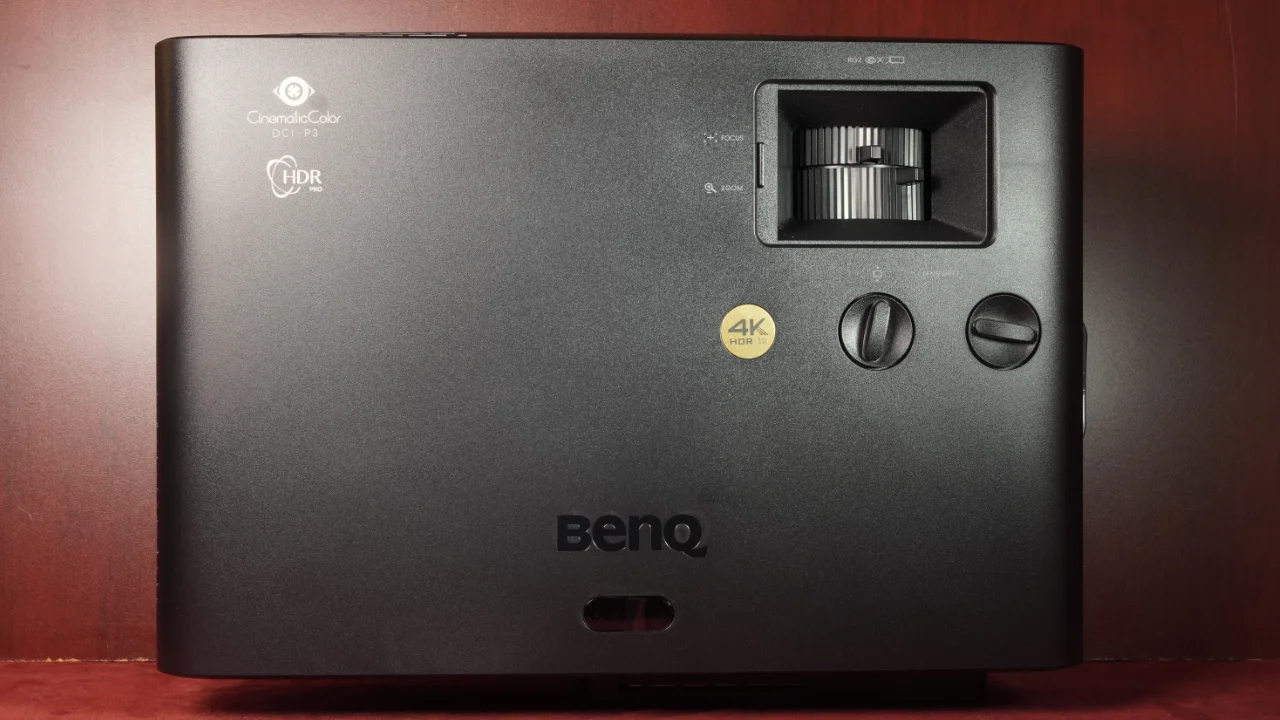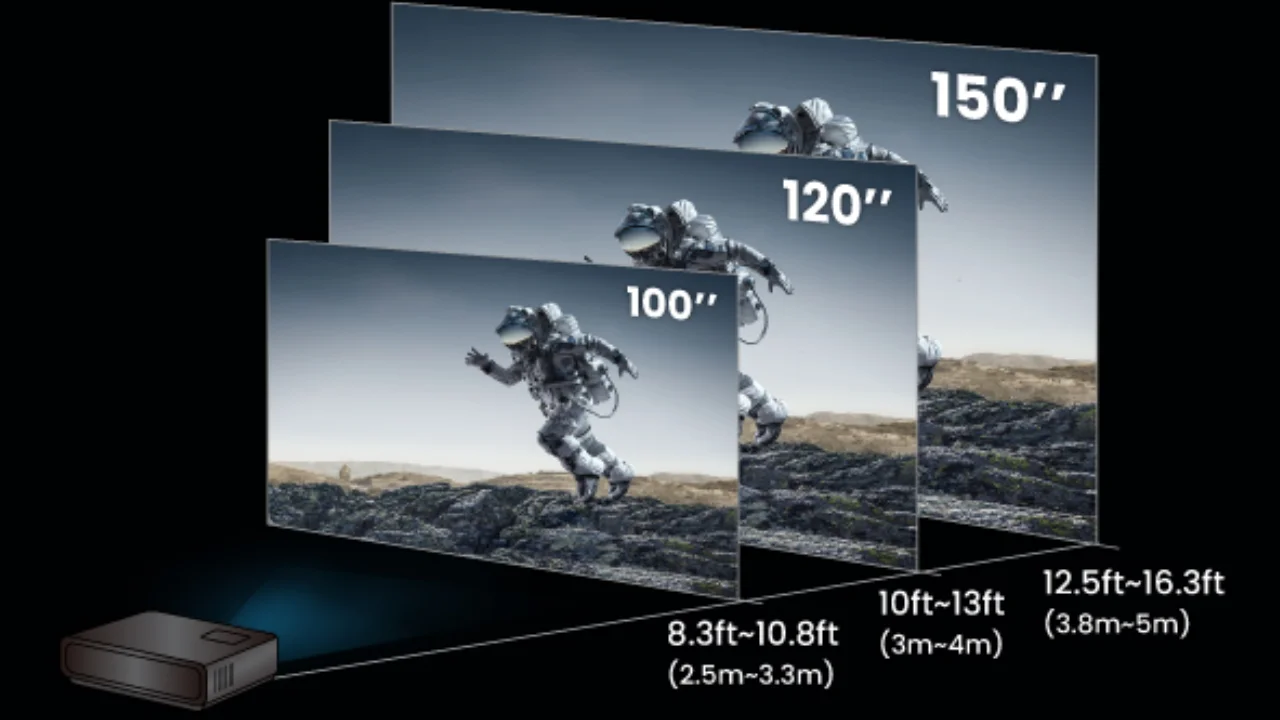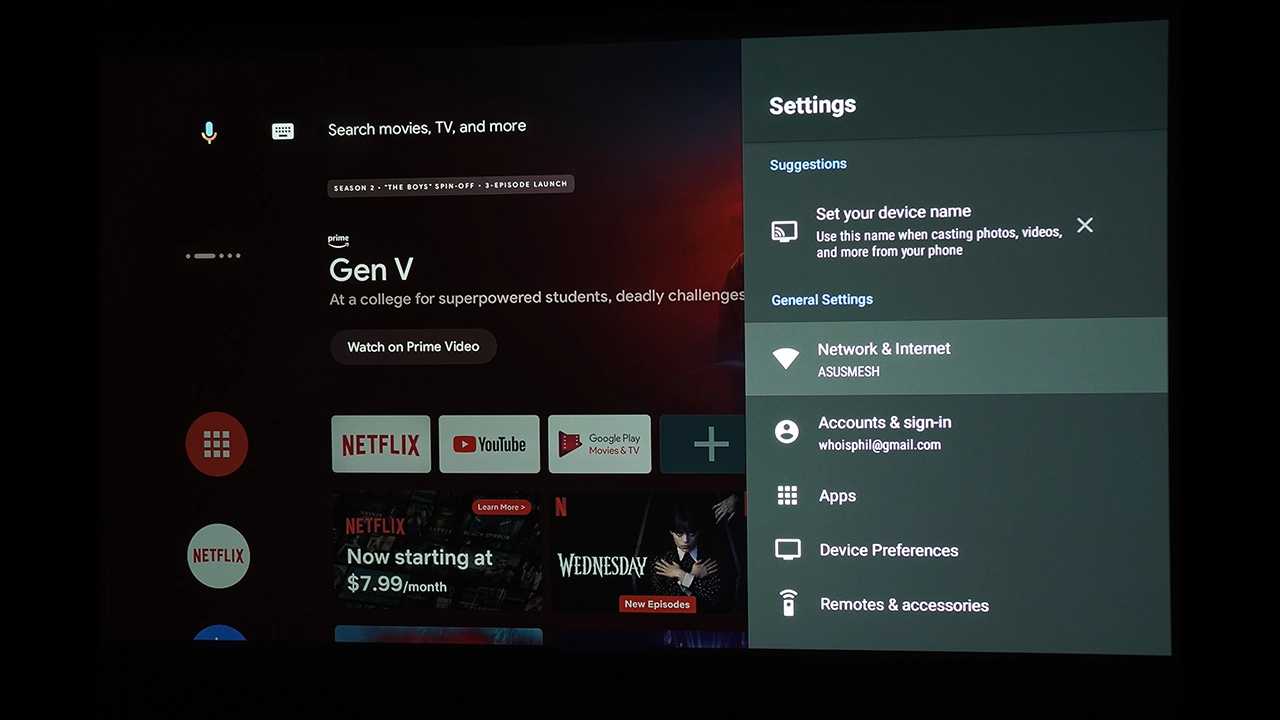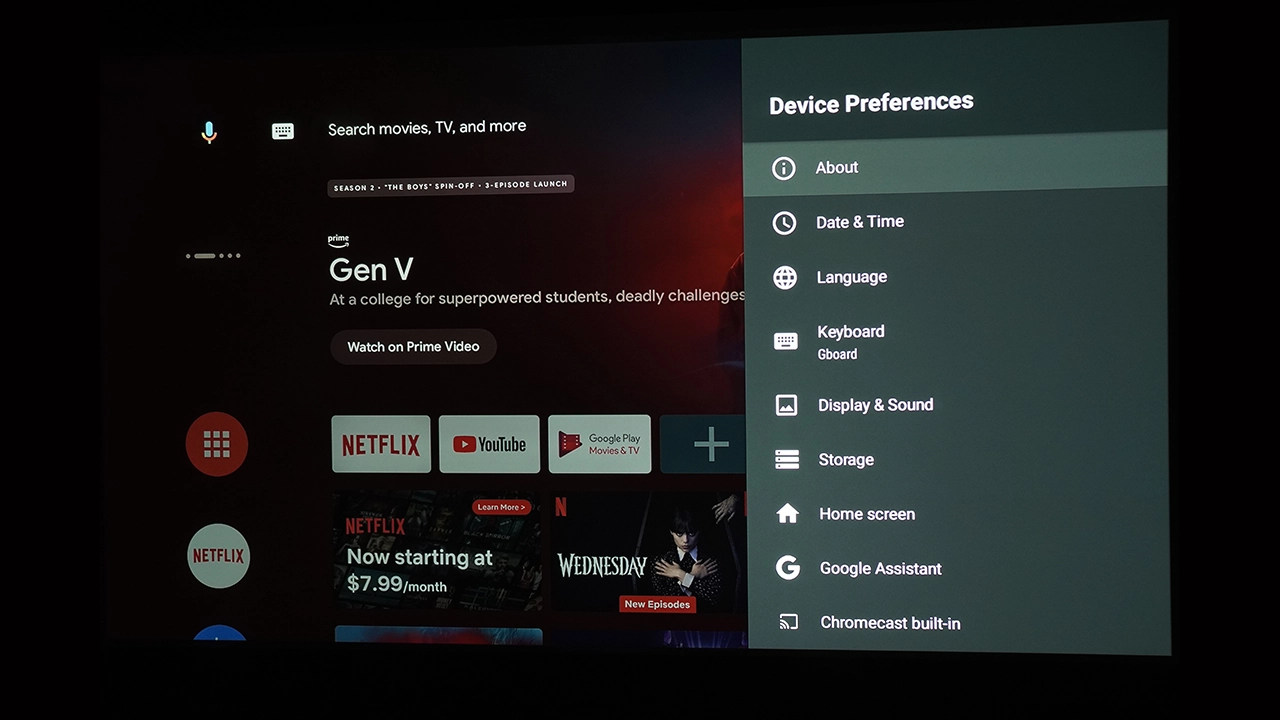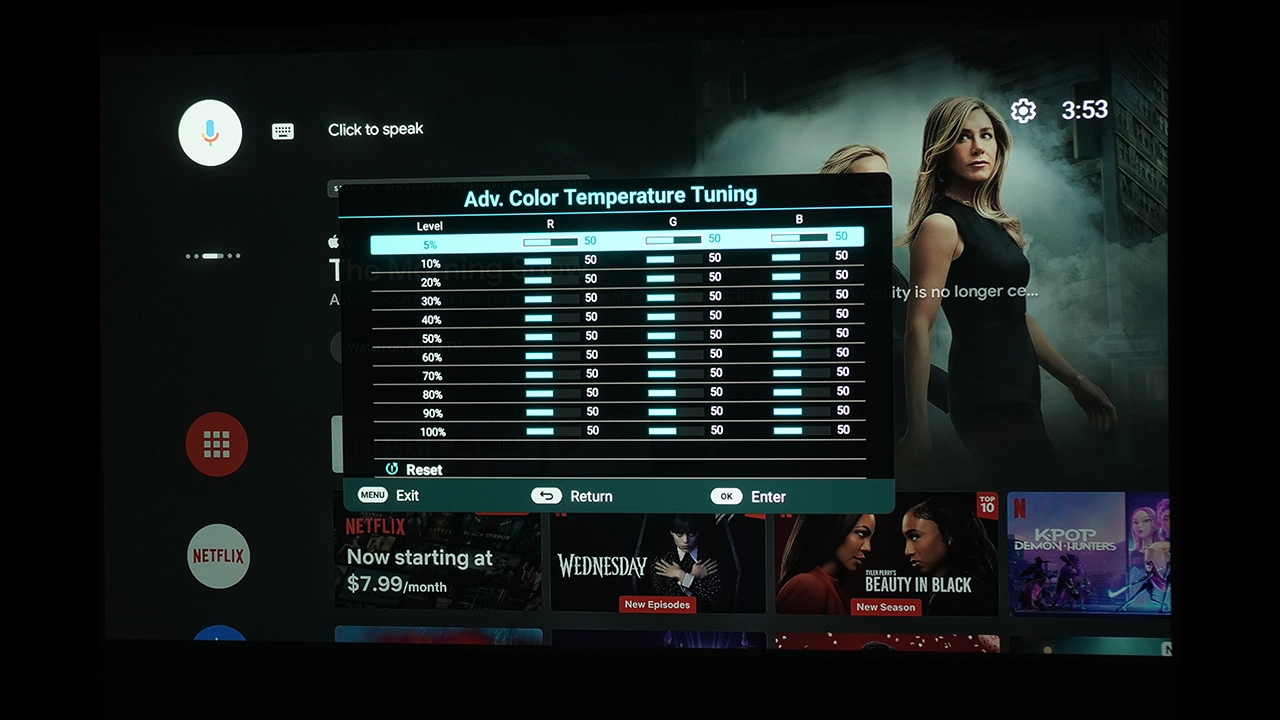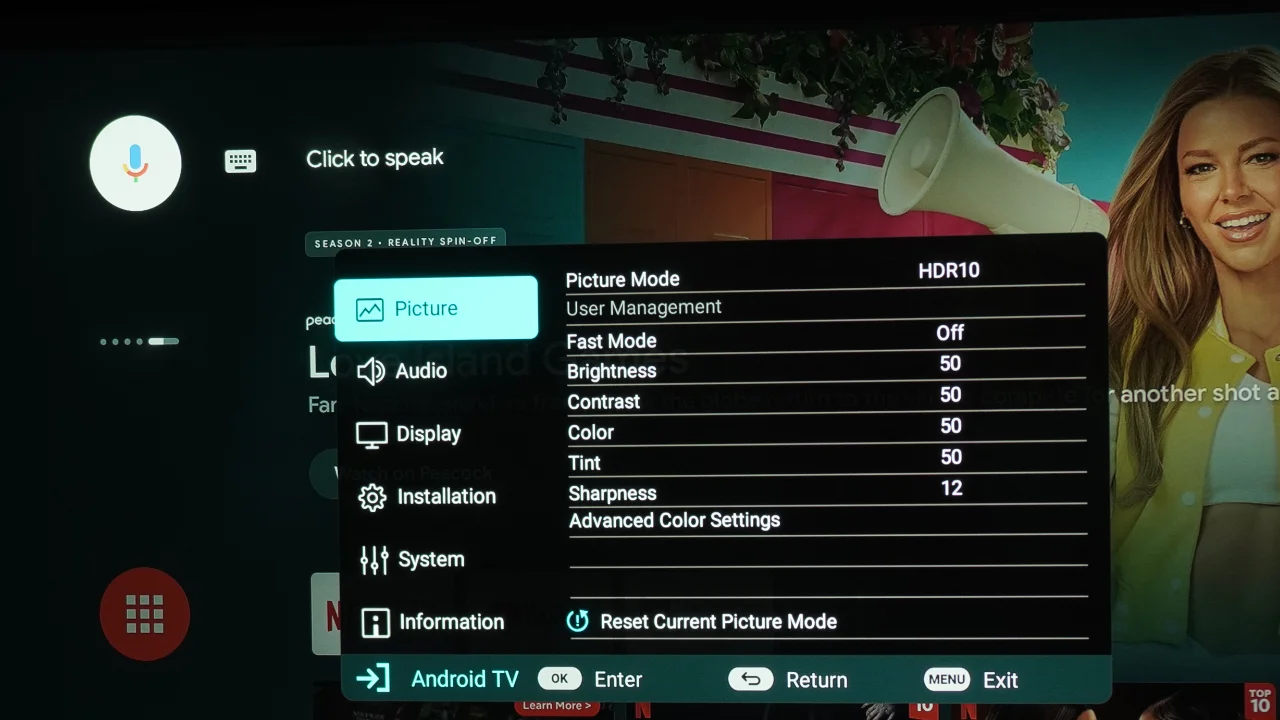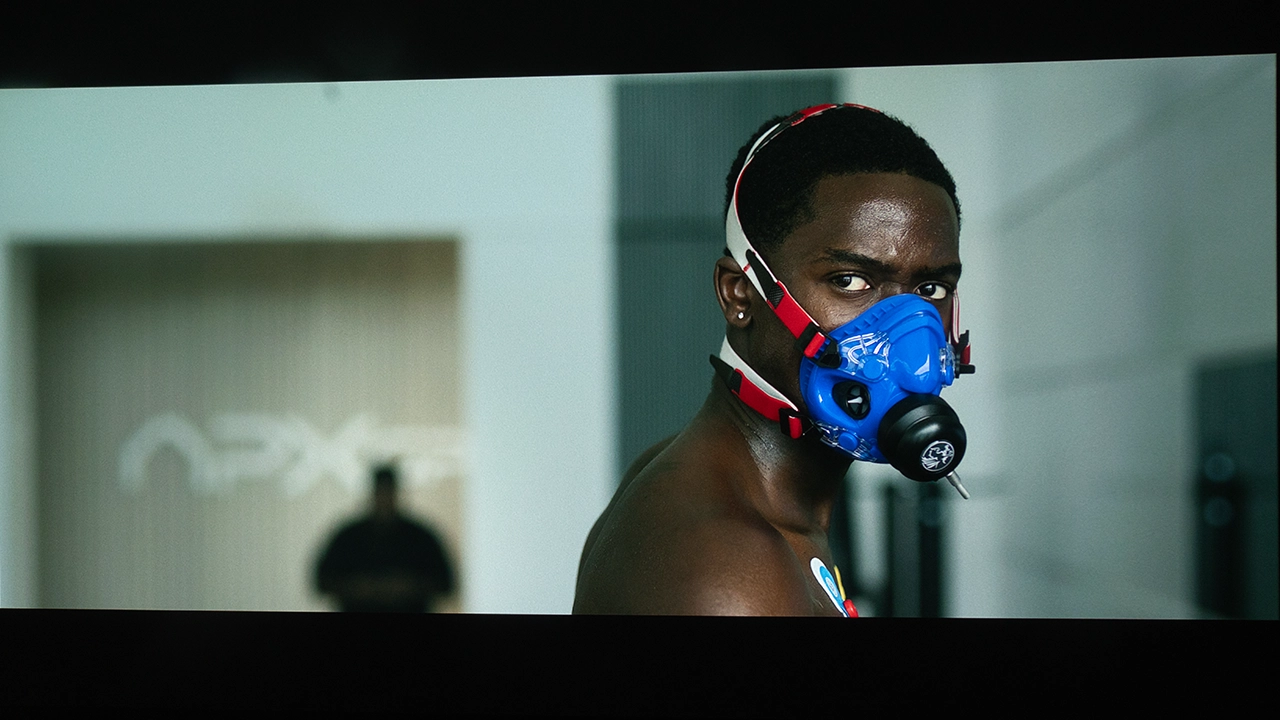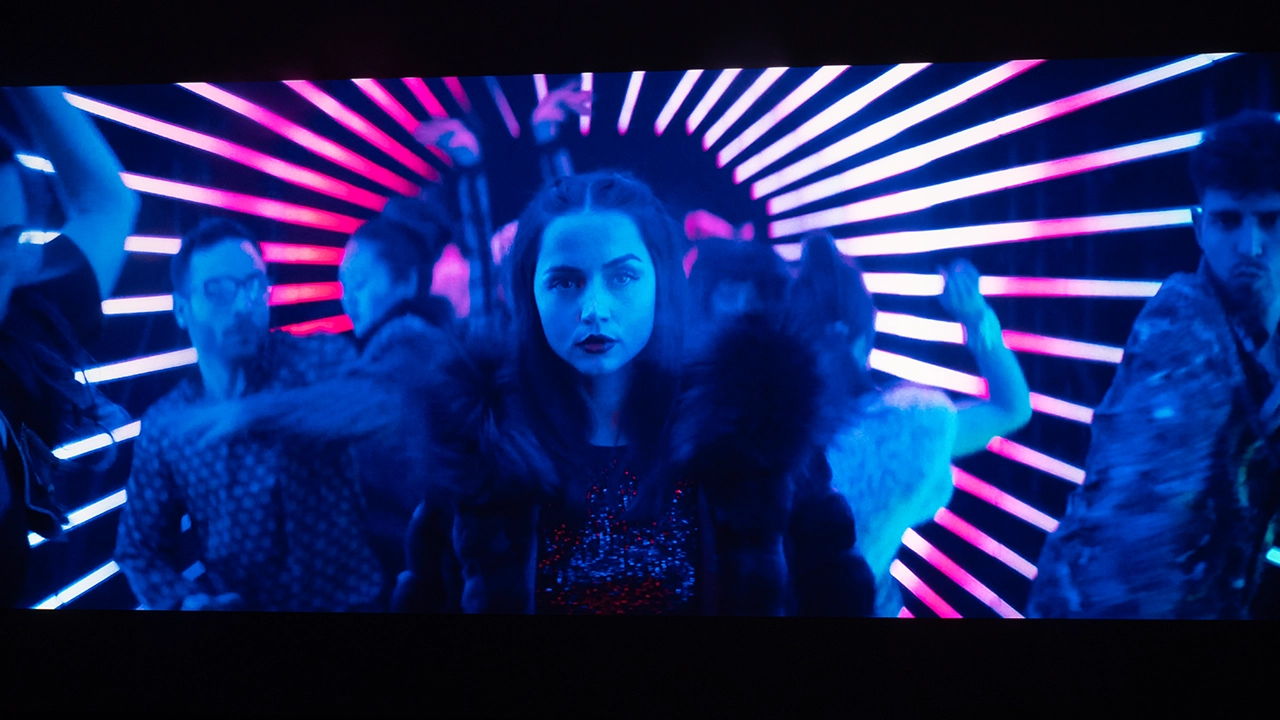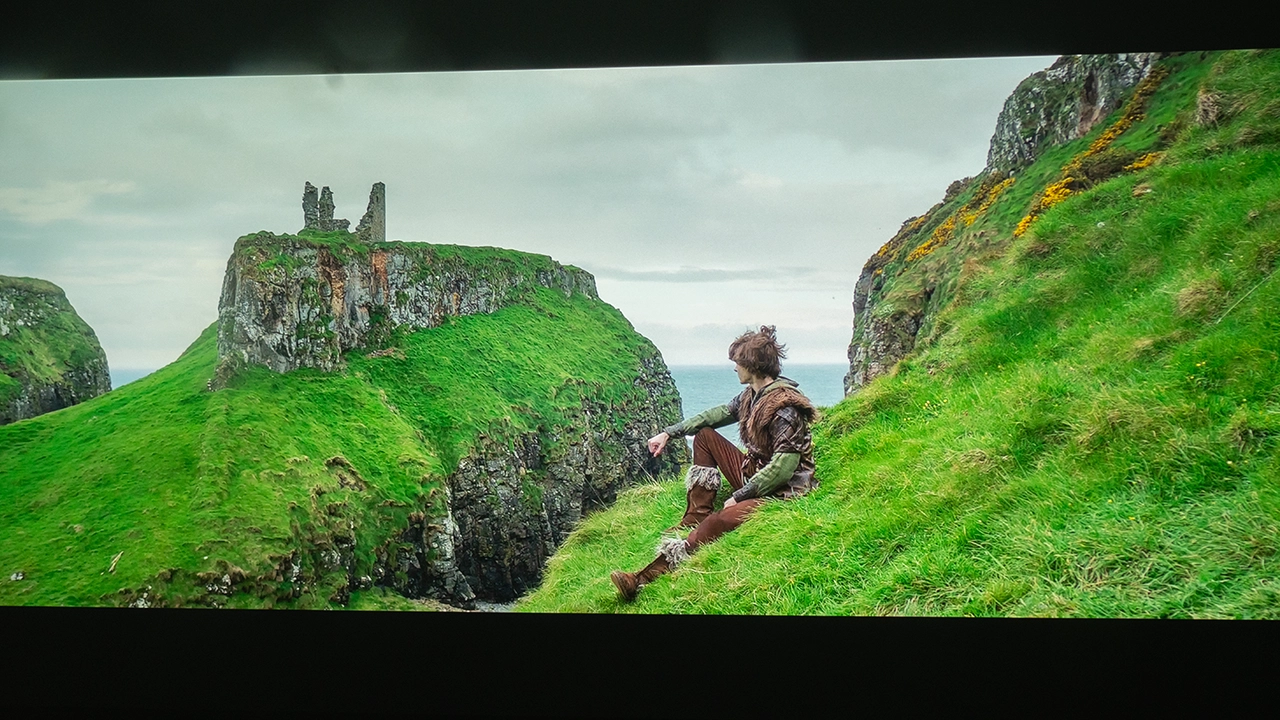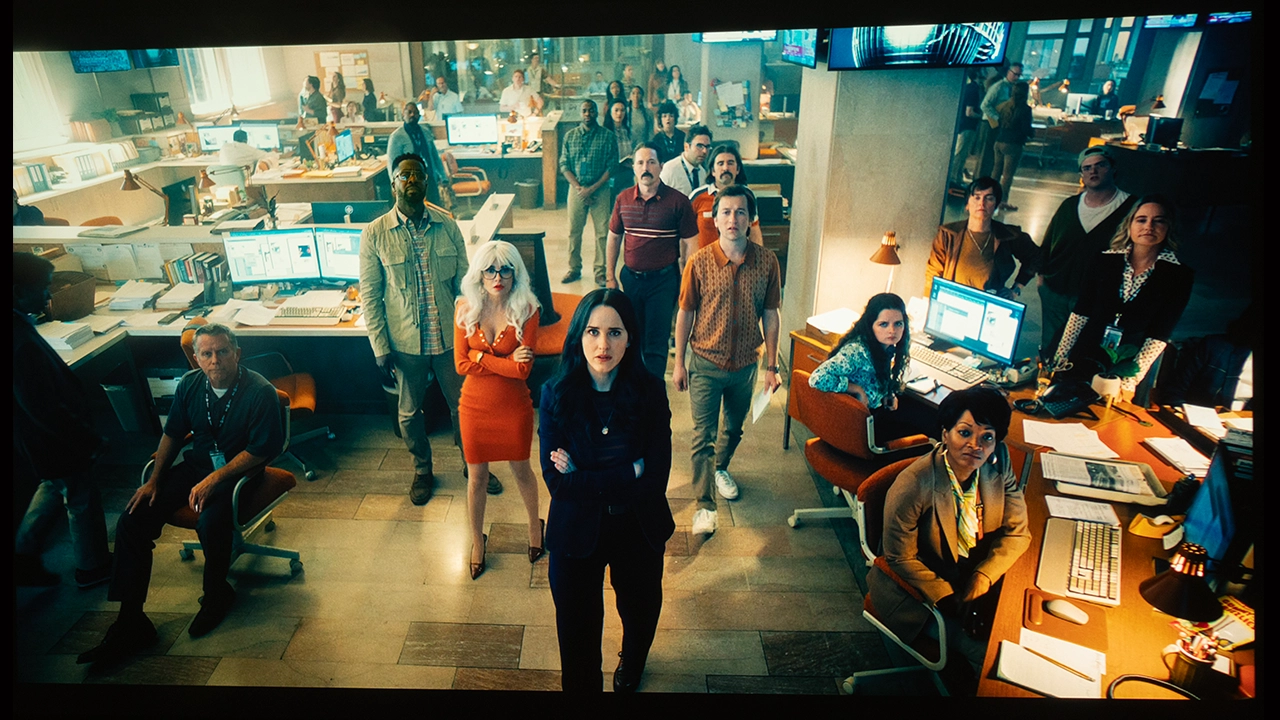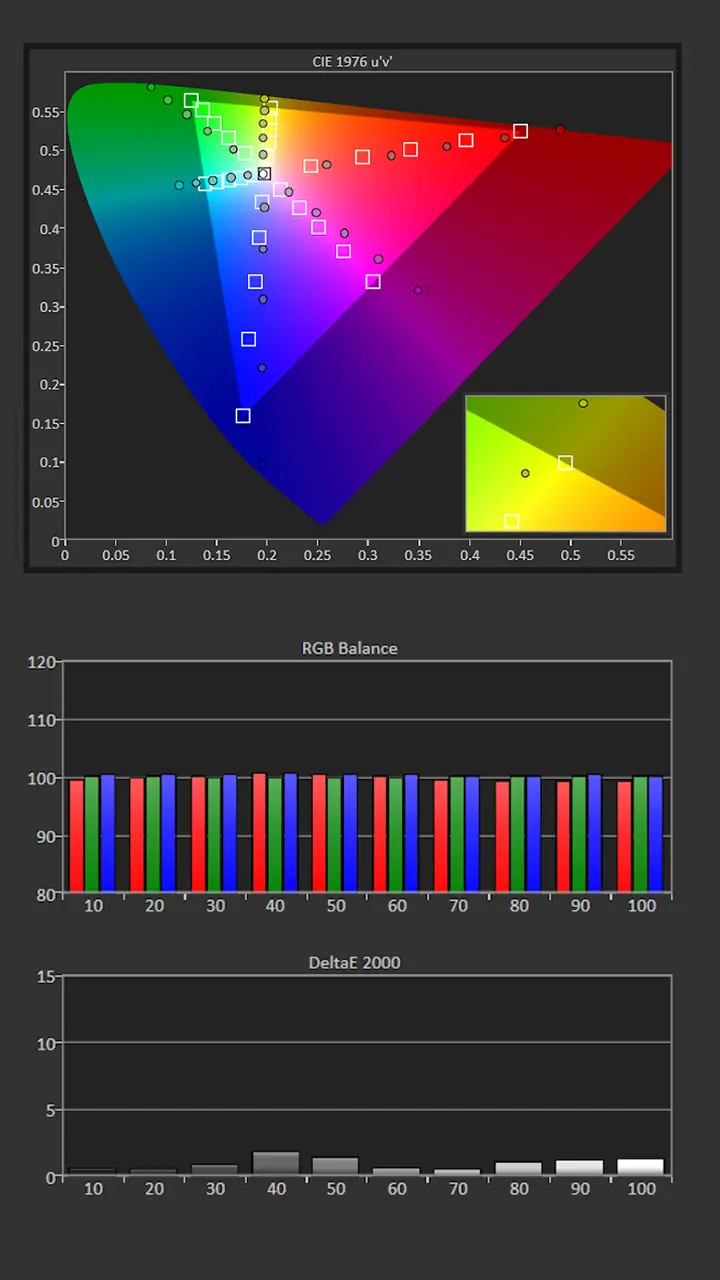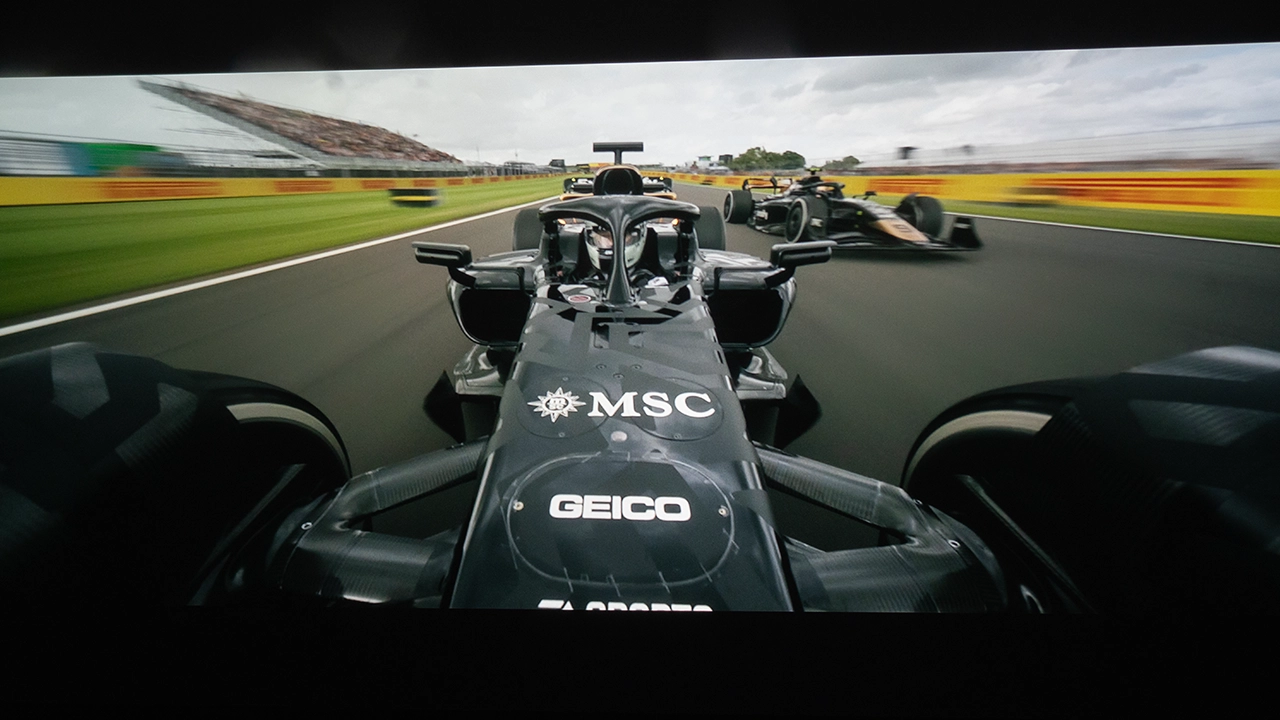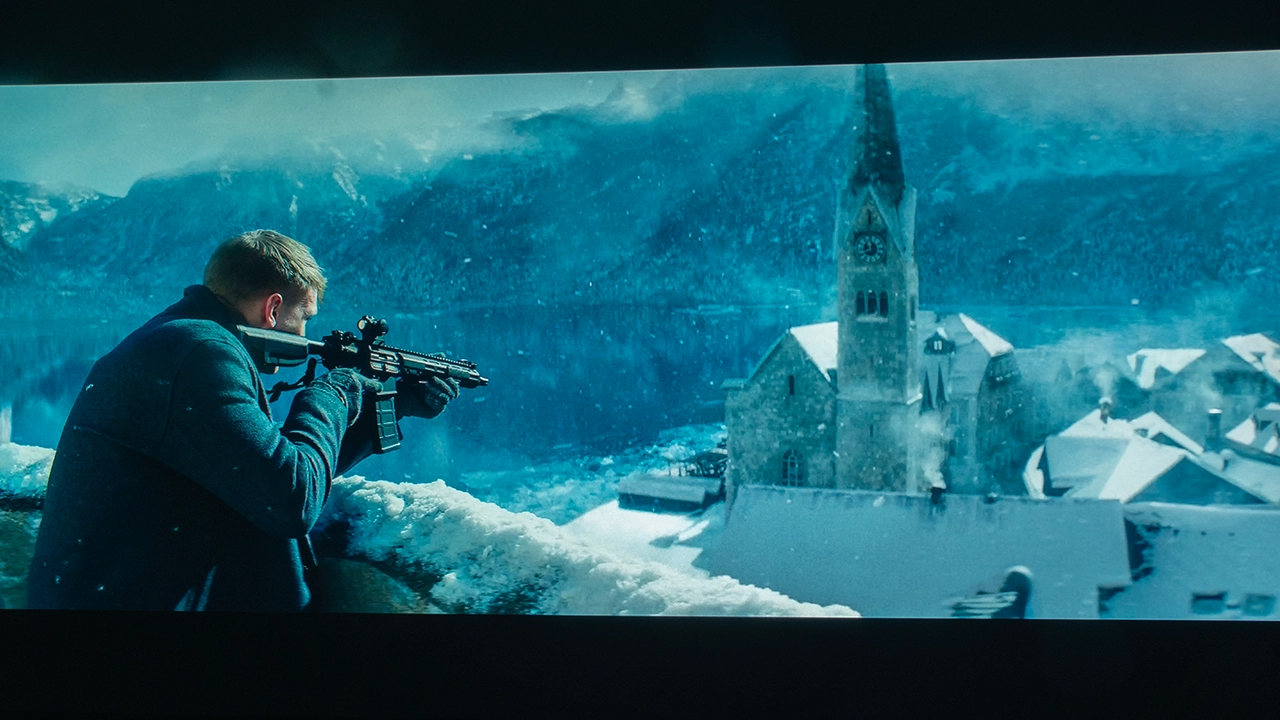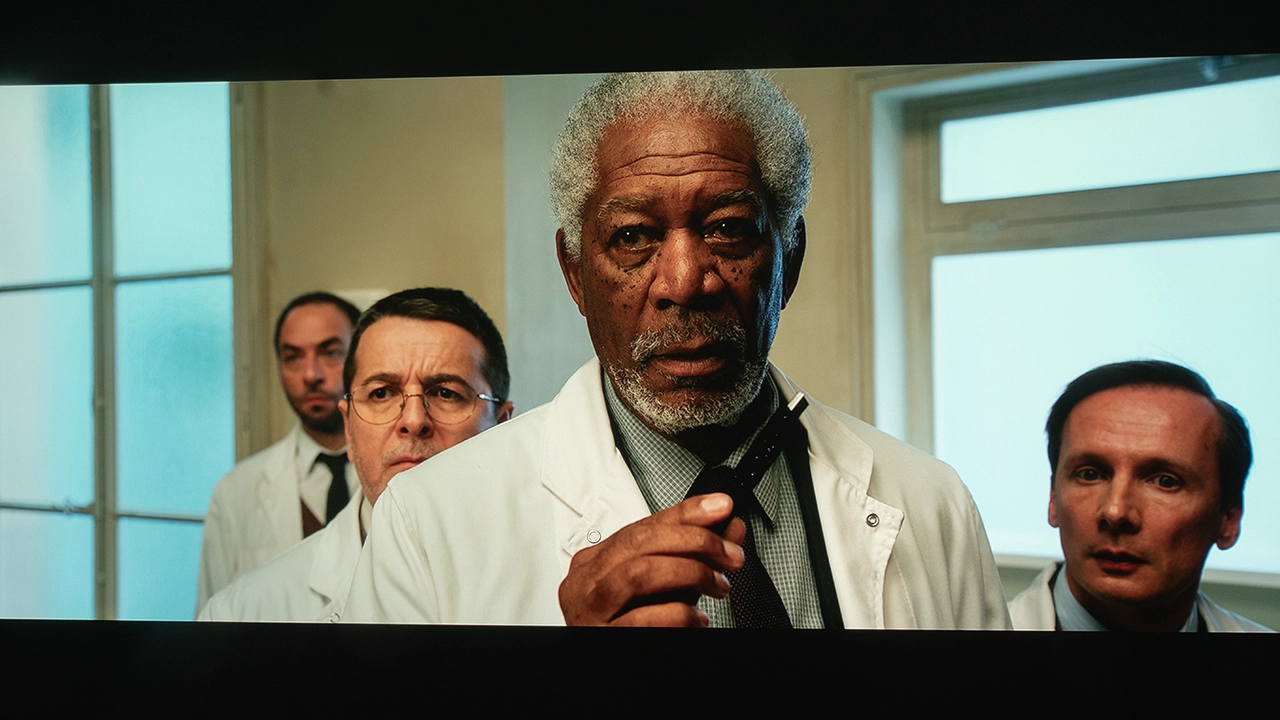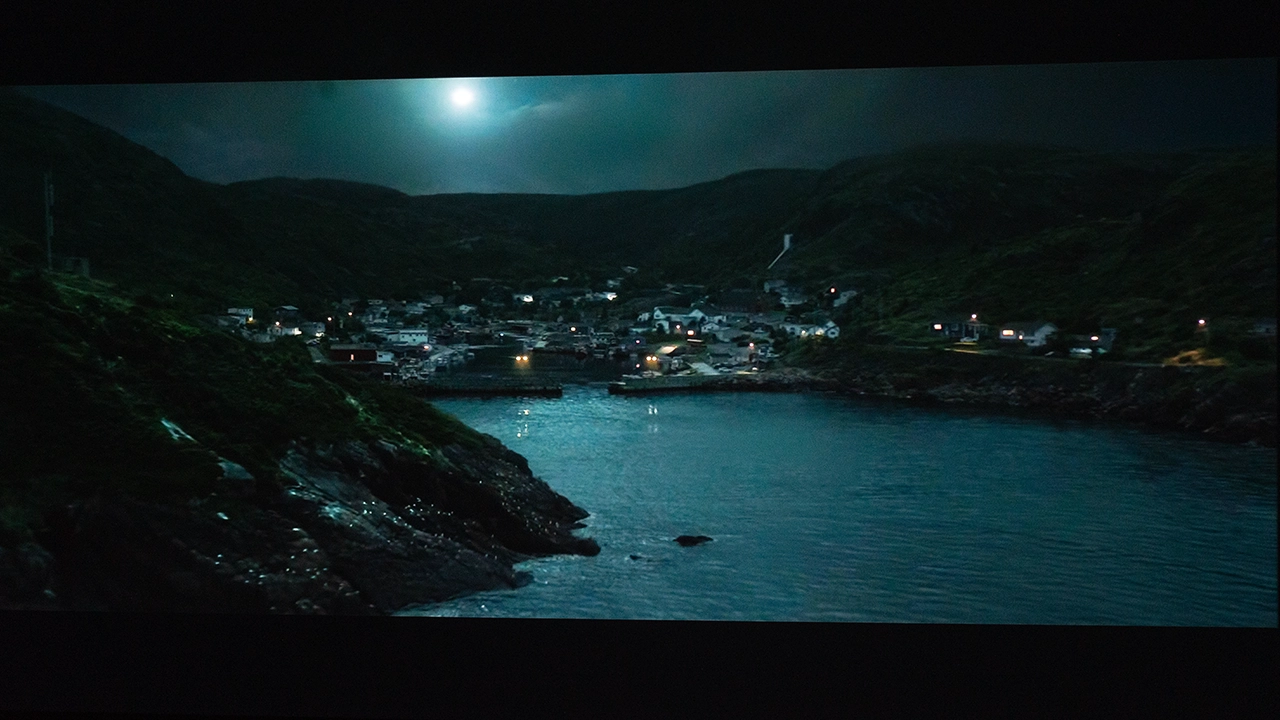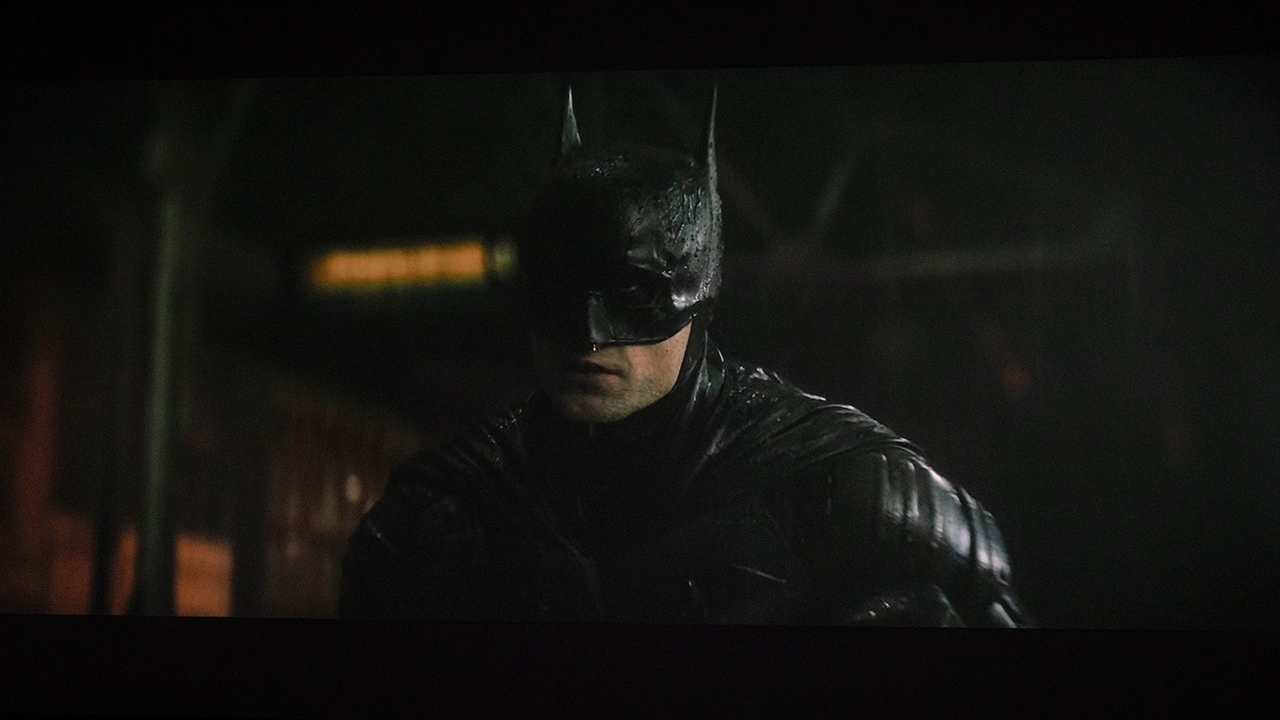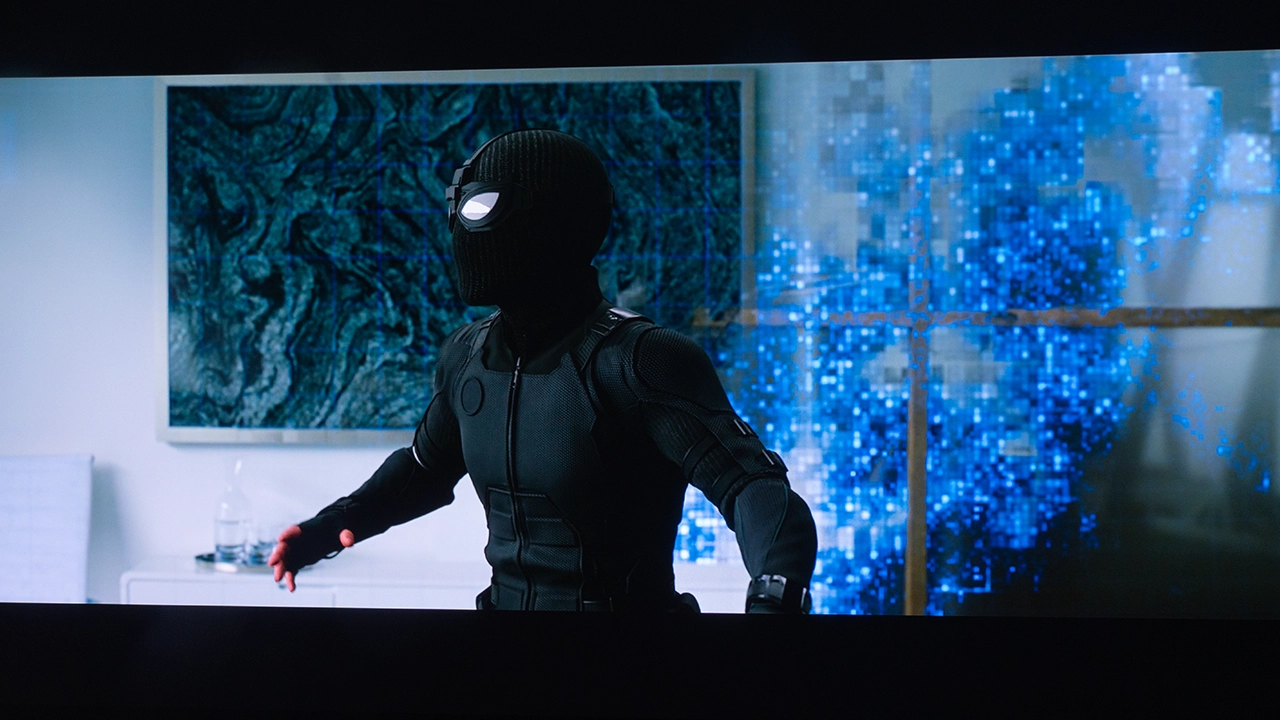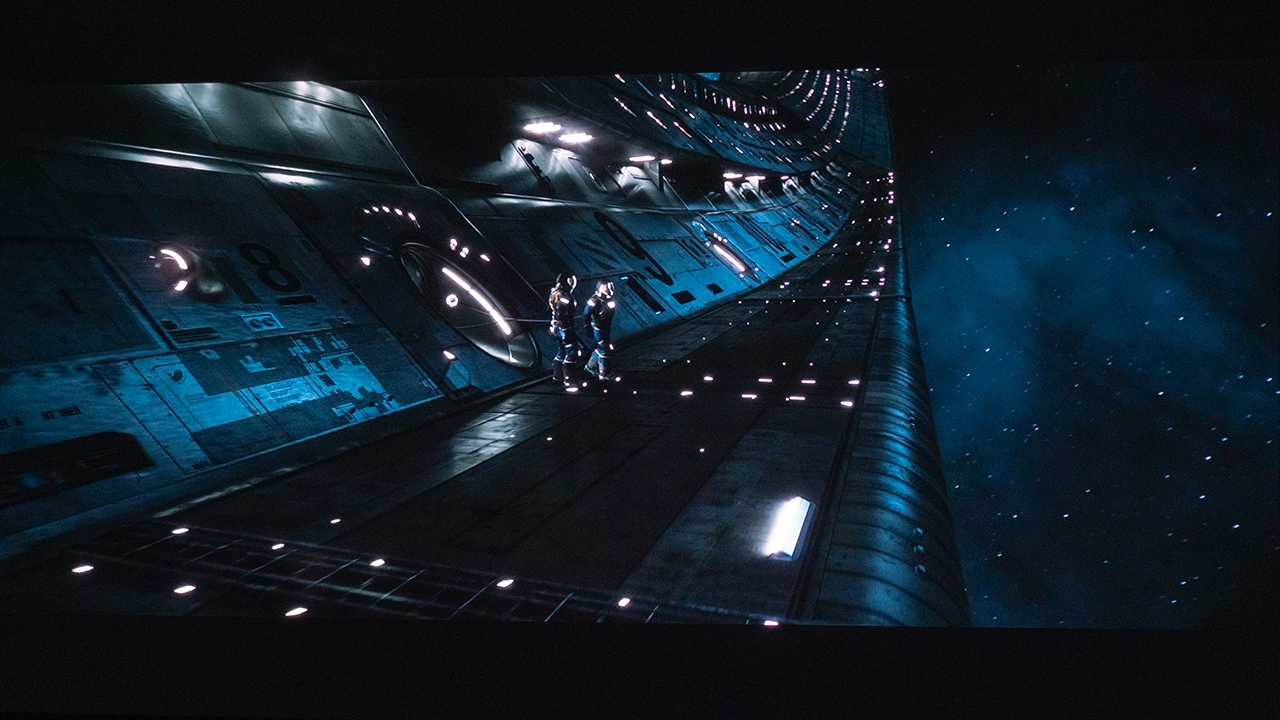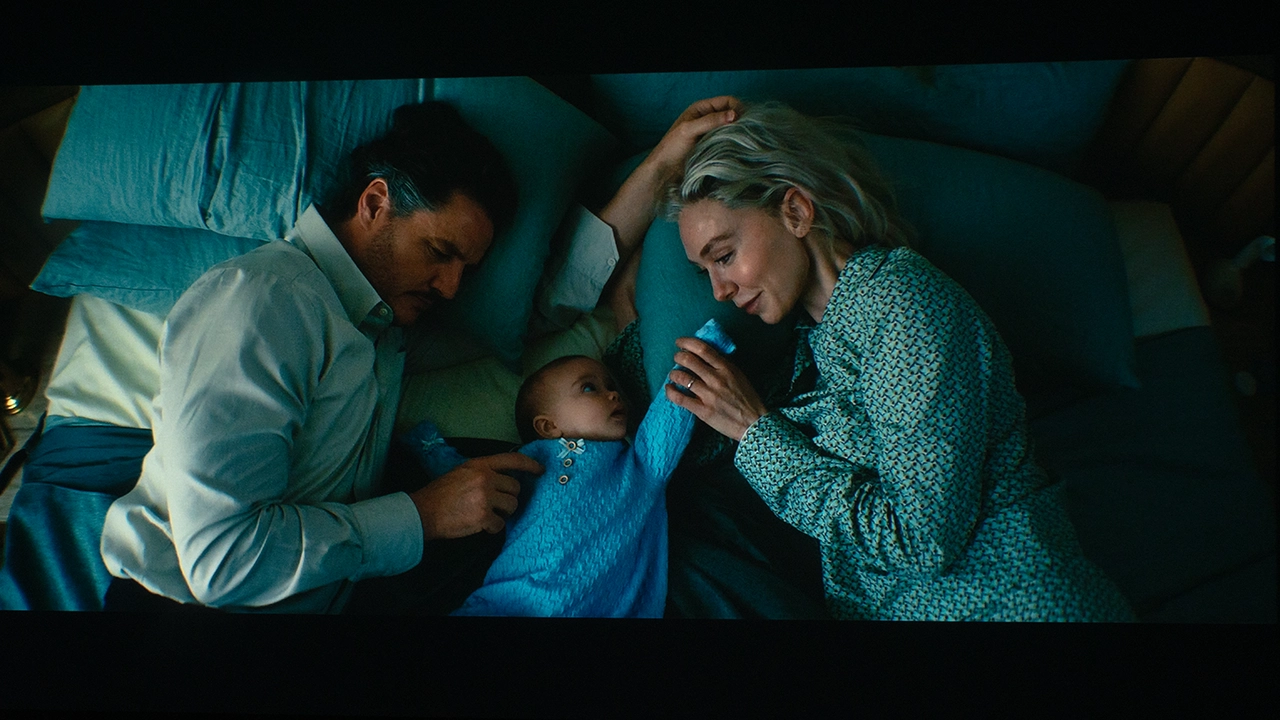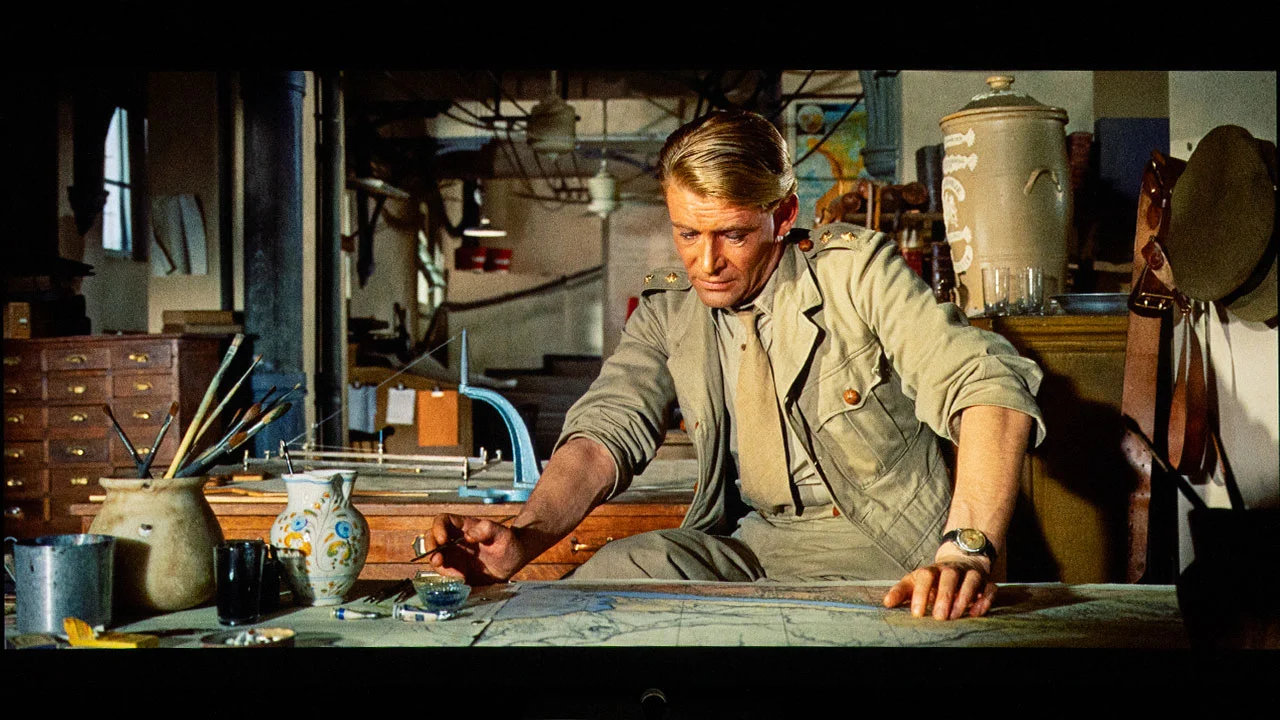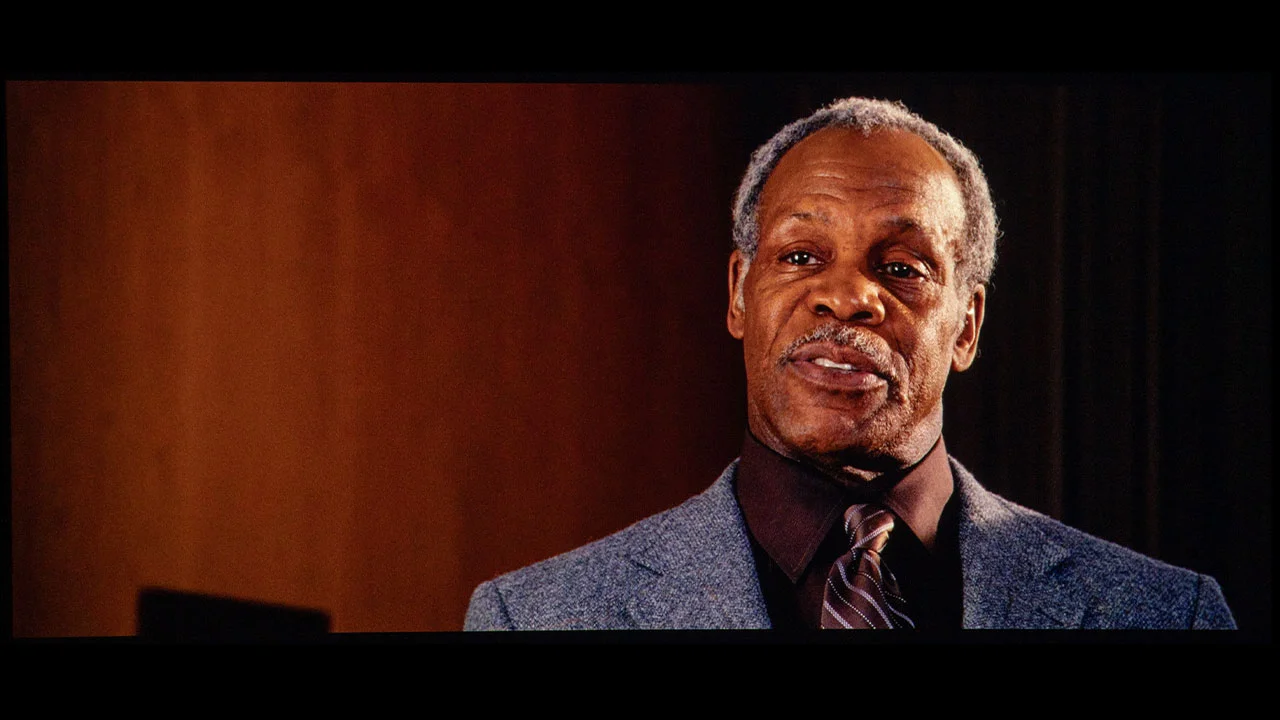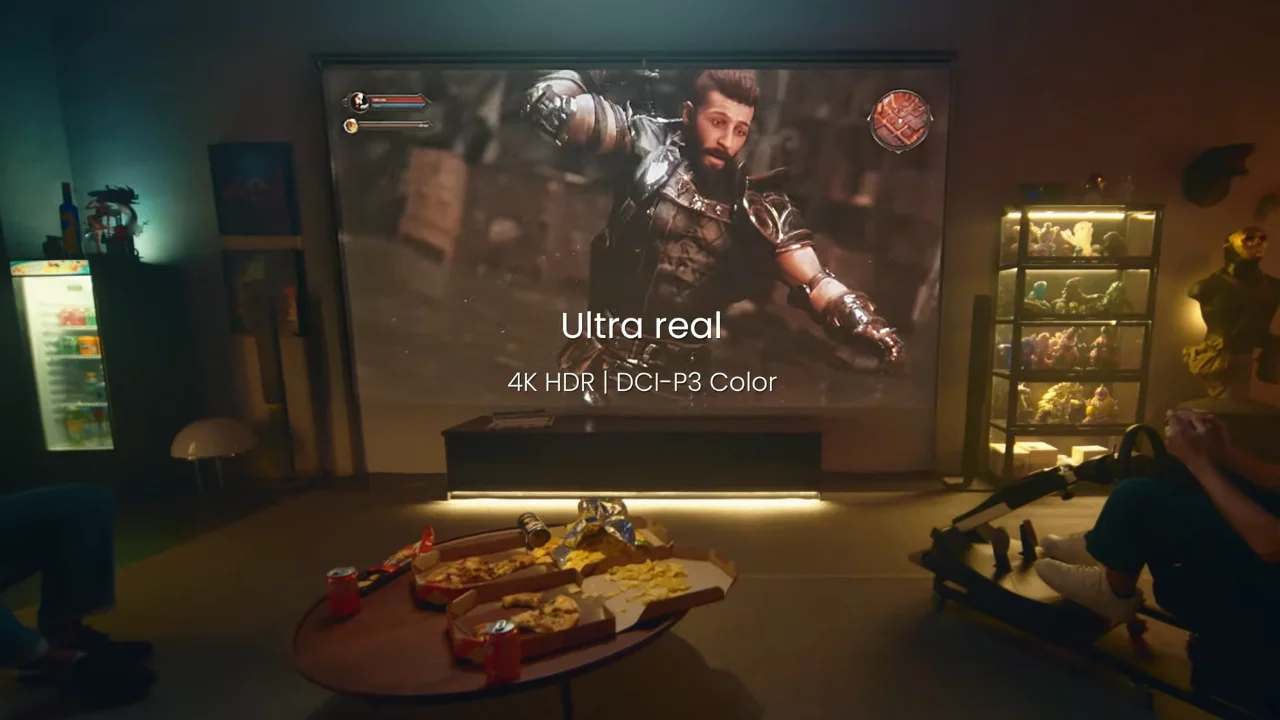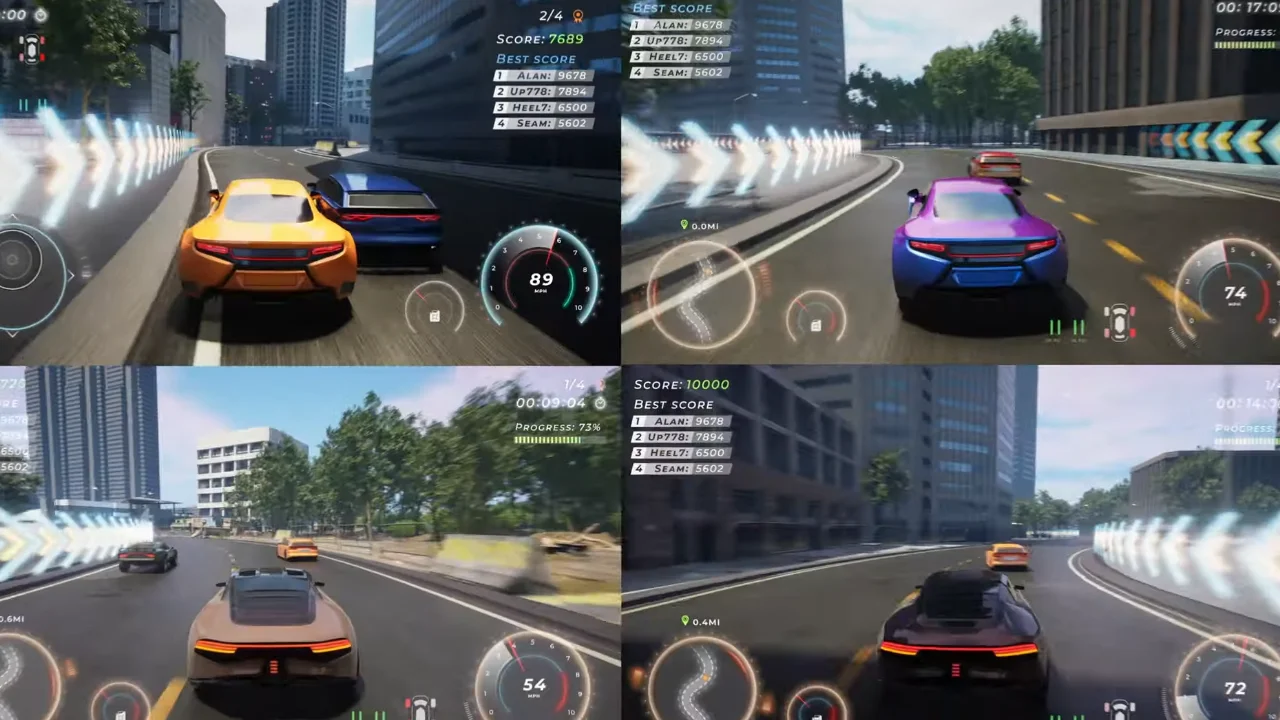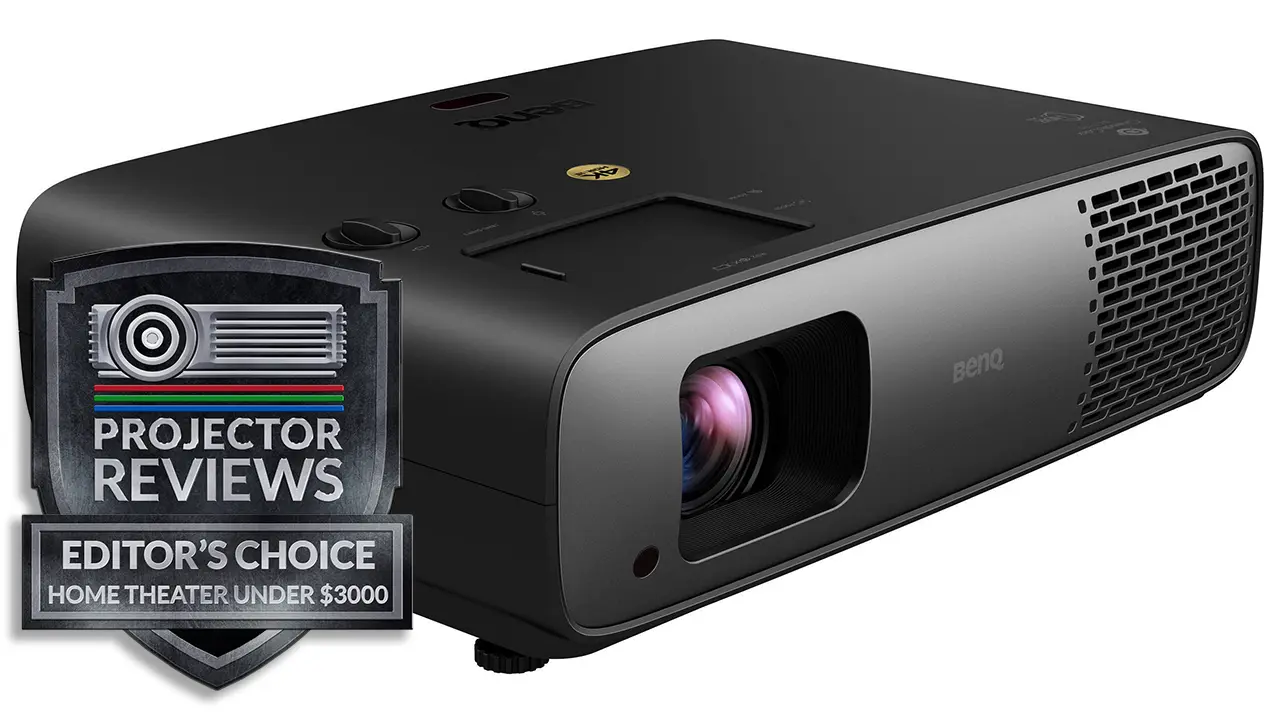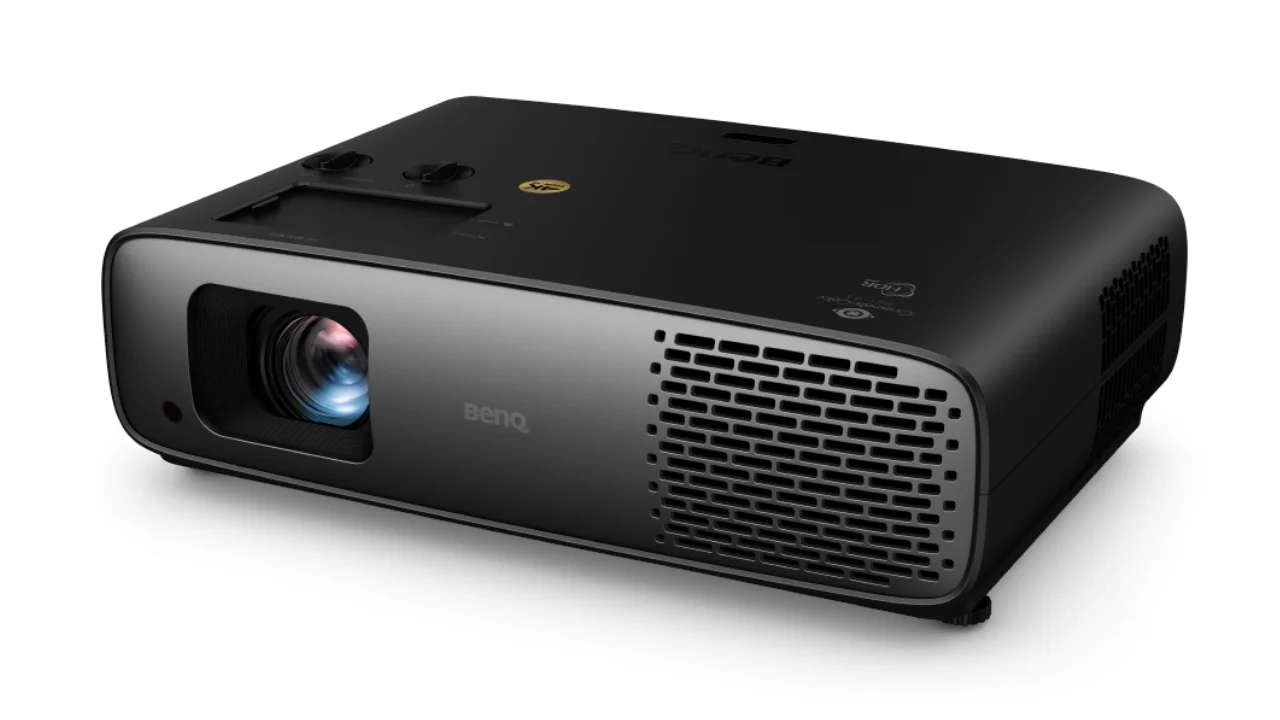The BenQ W4100i is a high-quality projector that incrementally builds on the older W4000i, while offering a noticeable step up in picture quality. The W4100i uses the same 3,200-lumen 4LED light source but, through processing, creates a picture that not only looks brighter but, based on my measurements, is brighter, measuring 3,893 lumens in my testing. This extra light, paired with the projector’s very accurate factory-tuned color, means you can get a great-looking image even if you’re watching in a room with some ambient light leaking in, without a significant sacrifice of color depth.
Another advantage of the W4100i’s 4LED light source is that you completely avoid the annoying laser speckle that many projectors using true RGB laser light sources can suffer from.
Due to the projector's larger 0.65-inch DLP sensors, there’s a noticeable improvement in image clarity compared to 0.47-inch projectors, in large part thanks to the 2-way XPR pixel-shifting technology. This advanced version of Texas Instruments XPR delivers smoother on-screen motion and reduces artifacts during busy scenes. Plus, BenQ's new AI-CINEMA modes analyze your video's scenes in real time, fine-tuning the projector's contrast and color settings to create a natural, balanced image. AI image processing on the W4100i works especially well with heavily compressed streaming media or poorly mastered video. If you prefer to manually dial in your image adjustments, you can easily switch this feature off.
Like many DLP projectors, the W4100i's biggest challenge is contrast. If you are a serious home cinema fanatic who prioritizes deep, inky LCoS-level blacks, this projector might not be for you. That said, through some very clever software, BenQ has made real strides in offsetting DLP’s inherent contrast and black-level limitations. HDR-PRO has been seriously overhauled and now integrates a new Global Contrast Enhancer right alongside the existing Local Contrast Enhancer, which does a solid job of boosting overall image depth. In addition, the Dynamic Black function's control range is much wider, modulating light output for finer adjustment in dark areas, perceptibly enhancing the subjective contrast impression. This dynamic tone mapping works across HDR10, HDR10+, and HLG. HDR-PRO prevents highlights from blowing out while retaining more detail in the shadows than even the impressive previous models' performance. That said, the obvious lack of Dolby Vision support is a real miss for BenQ, as many of its competitors offer both HDR10+ and Dolby Vision HDR.
For gamers, the W4100i is impressive, offering a respectable input lag lower than the previous W4000i’s, hitting 6.5ms at 1080p/240Hz and 17.9ms at 4K/60Hz. The projector features three (3) new HDMI 2.1 ports with ALLM, which automatically switches to low-latency mode when you fire up a compatible console like an Xbox 360 X or PlayStation 5.
If you are a fan of projecting large 3D video, BenQ continues to support 3D playback with a pair of compatible 3D glasses. The powerful 4LED output gives you a lot more brightness headroom in 3D mode than most older models, resulting in an immersive 3D experience, especially on a big screen.
The W4100i is a smart projector that comes with an Android TV dongle, offering many of the best Google smart streaming experiences. I would be lying if I didn’t express my disappointment at the lack of Google TV support, given that BenQ opted for an older, far less curated Android TV experience. On the plus side, BenQ seems to have addressed the menu navigation lag that has plagued their smart projectors for years in this new model.
Ultimately, the W4100i’s combination of 2X XPR pixel shifting, improved HDR processing, and wider contrast control results in a much brighter-looking, color-accurate image. If you bought the W4000i, you might need to carefully consider upgrading before rushing into it. However, if you own an older 4K projector, upgrading to the W4100i is likely a fantastic choice for your home theater. Even if inky black is a requirement, it can be dramatically improved by pairing it with a good contrast-enhancing screen.
Overall, the BenQ W4100i delivers impressive video quality and offers a range of features and settings to enhance your home entertainment experience.
Final Thoughts
It wasn't that long ago that LED light sources were only powerful enough for small portable projectors, and the home theater projection market was exclusively powered by laser light engines. Even today, blue-laser phosphor and RGB triple laser light sources make up the lion's share of home theater projectors. That situation has been steadily changing over the last few years as high-performance, full-LED light sources that produce more than 3,000 lumens have been chipping away at the laser diode's market dominance. BenQ has been one of the companies driving the growing acceptance of high-end LED light sources for uses beyond portable projectors.
Since the company introduced the W4000i two years ago, BenQ has not slowed its pace, and the new W4100i is proof that BenQ remains committed to producing premium home theater and gaming projectors powered by LEDs that are more than capable of serving as reliable alternatives to laser-powered projectors.
While some sub-$3000 DLP projectors can deliver better black levels, the BenQ W4100i combines high brightness and excellent color reproduction with a zoom lens that features vertical/horizontal lens shift, making it a fantastic option for a home theater.

